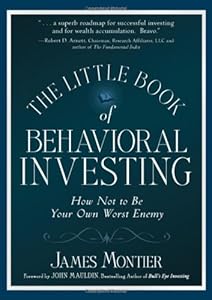Distinguishing the Signal from the Noise
As a writer, I have to read a lot. Sometimes I read up on a topic for hours because the internet is overflowing with information, opinions, expert advice and whatnot. I feel that if I don’t soak it all, I won’t do justice to the subject. However even after hours travelling the Wikipedia wormhole, I found myself nowhere near a working article.
Thankfully, this is a story from my past. After many such wasteful episodes spread over months, I had the good sense to revise my strategy. Now when I research a topic, I think of 4-5 questions that the article must answer and limit my research to these areas. My research and writing is done in half the time I spent earlier and I feel that I have become a better writer because of it. In fact, now I get to spend more time on editing which is what pruning is to a rose bush.
And I am not alone in this. Study after study shows that we are incapable of telling the difference between more information and better information.
Montier talks about “information overload” in Chapter 6 of The Little Book of Behavioral Investing: How not to be your worst enemy. We are living in an age where excessive data is thrown at us from every angle – investment experts on multiple TV channels running round the clock, telling us we what we need to know, postmortem reports on failing stocks, and loads more. And not to mention the plethora of investment blogs on the internet that slice, dice and serve up the most arcane of data.
Montier’s advice: Close your eyes and ears to all the noise. He suggests that we first decide what attributes of a business would make it attractive to us. These factors can vary based on our investment goals and that’s ok. Montier himself, being a deep value investor, focuses on questions that are quite different from those asked by Warren Buffet. The goal is to stick to researching the business along these attributes only – thoroughly and deeply.
“More is not always preferable to less;” not unless you’re a computer. Montier illustrates the point with various examples of real life experiments. The premise: The accuracy of forecasts is evaluated based on lesser or more number of data variables provided to the decision maker. Irrespective of the test subjects – bookmakers, football fans, car purchasers or financial analysts – the observations are the same:
- The accuracy of predicted outcomes with 5 data variables is the same as with 40.
- The confidence of forecasters goes up as more data variables were handed out.
This means that though the confidence of forecasters goes up as more information is fed to them, they don’t end up making more accurate forecasts. You too may find that many of the financial “analysts” who ooze confidence on media only have a surface knowledge of what they’re talking about.
Montier uses another example to expound on what’s needed to improve the accuracy of forecasts. He refers to a hospital in Michigan where 90% of patients who came in with severe chest pains were inaccurately admitted to the ICU. This led to overcrowding, high costs, and deaths because of diseases contracted in the ICU. Researchers found that doctors were looking at the wrong factors during diagnosis. They corrected this problem by creating cards that doctors could reference for better decisions. The approach worked but that’s not really the moral of the story.
Researchers found that the doctor’s decision making prowess remained the same even when the cards were taken away. The doctors had over time assimilated the correct cues from the cards and started looking at the right factors during diagnosis. Their attention had moved from pseudodiagnostic to truly informative elements.
Researchers used this feedback to create simpler decision making assistants such as checklists. This helped to improve overall healthcare quality by ensuring process adherence across the board. As a result, patient death rate and post-op complications fell from 1.8% and 11% to 0.8% and 7%. Astonishing what a simple checklist helped to achieve!
Now we come to the moral of the story: You need to know what attributes to weigh to assess the soundness of your investment choice. Analyze on those lines only but analyze deep. Make a checklist, why not? Just make sure you don’t do that one thing – become directionless with second hand, surplus information.
Related:
The illusion of knowledge
The value of publicly available information is zero
Monica Samuel is doing a chapter-wise review of the book: The Little Book of Behavioral Investing: How not to be your worst enemy by James Montier. You can follow the series by following this tag: tlbbinvesting or by subscribing to this rss feed: tlbbifeed

